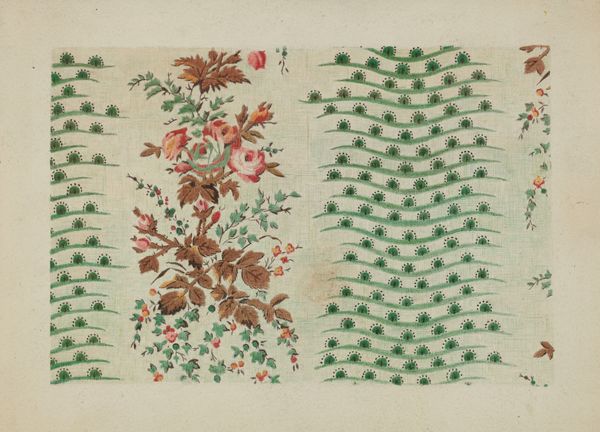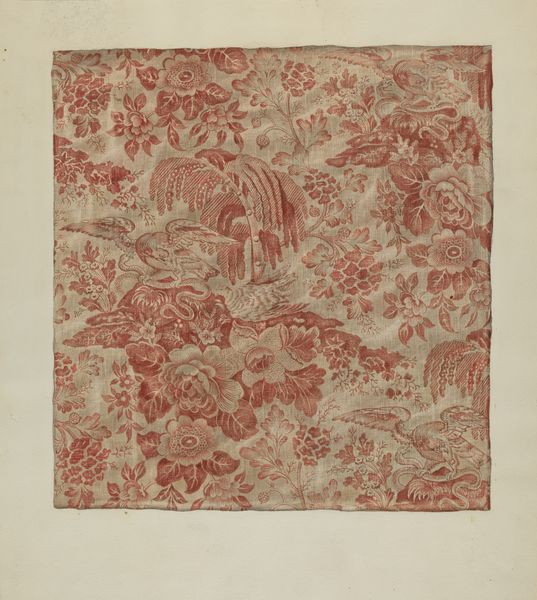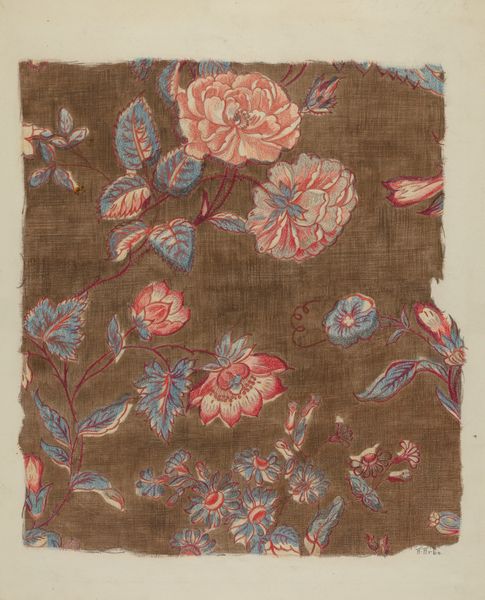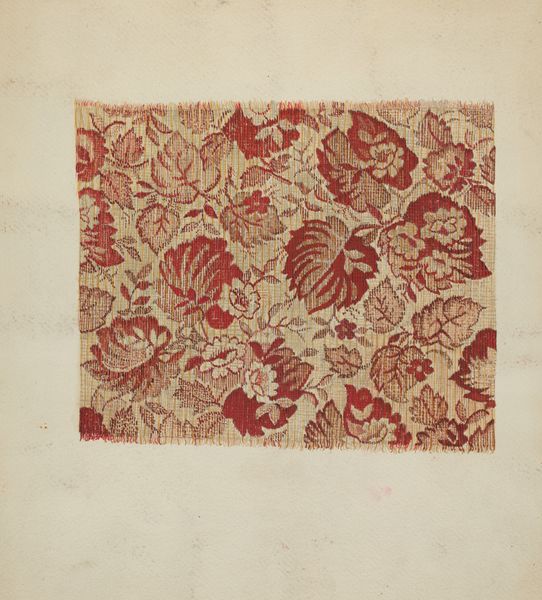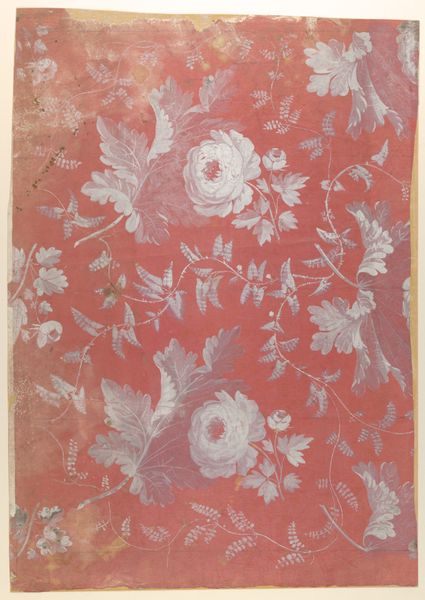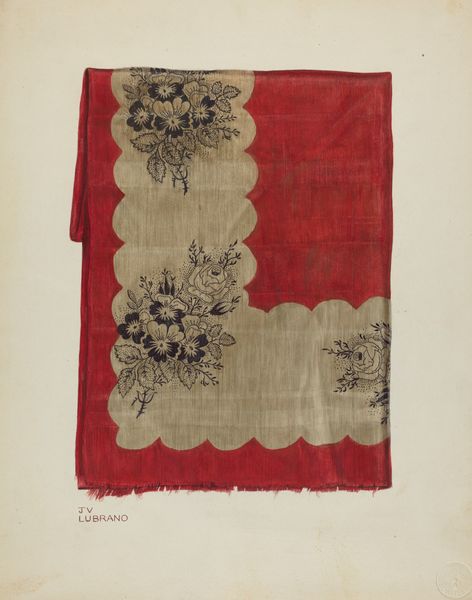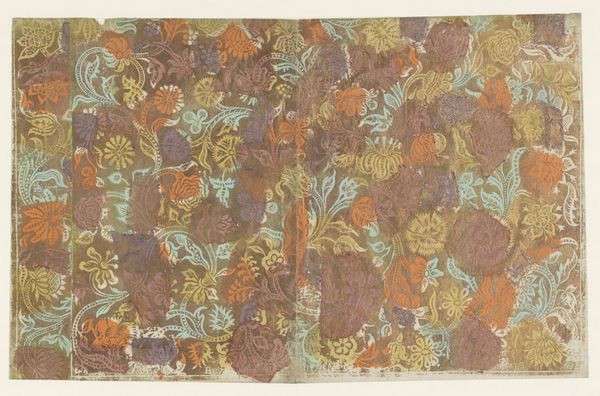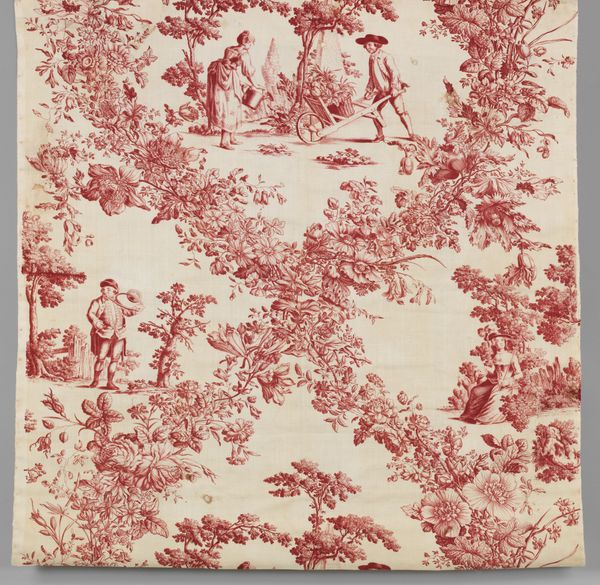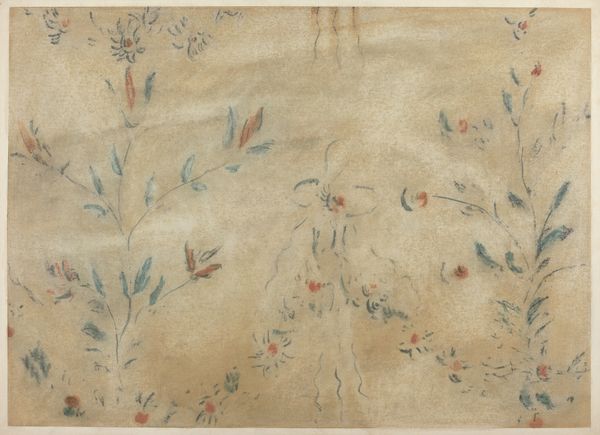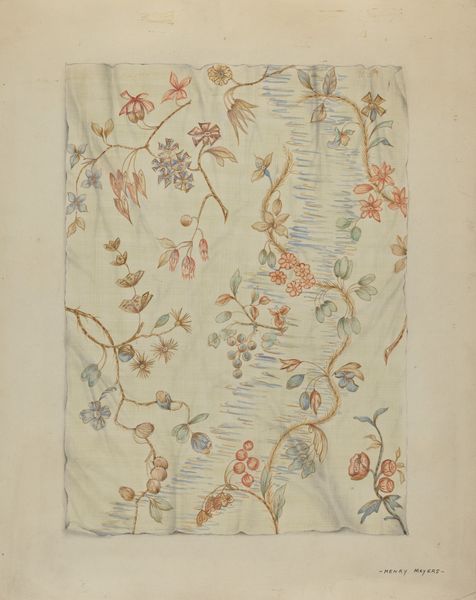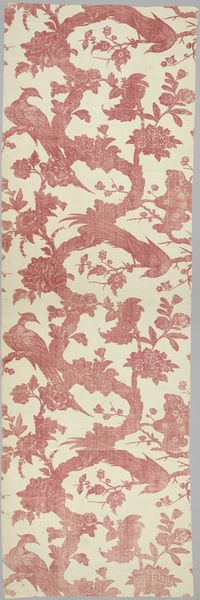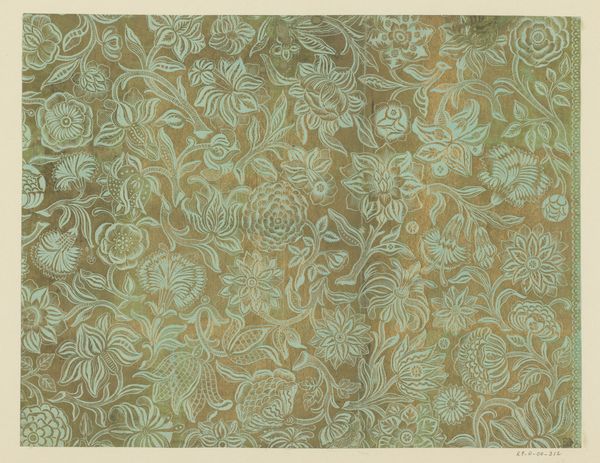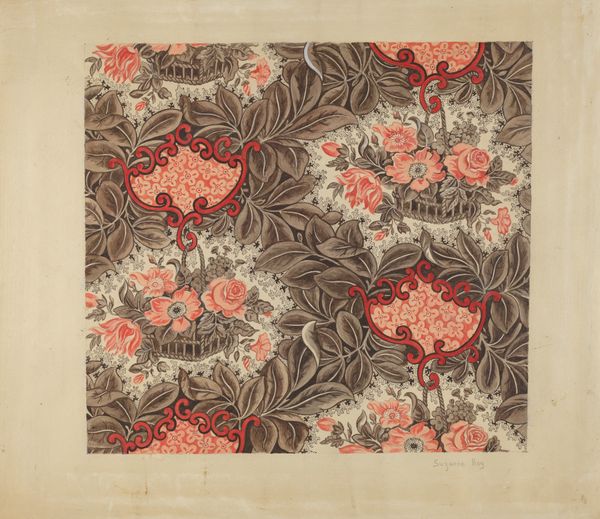
drawing, textile
#
drawing
#
natural stone pattern
#
organic
#
pattern
#
textile
#
geometric pattern
#
pattern background
#
abstract pattern
#
organic pattern
#
fabric design
#
pattern repetition
#
textile design
#
imprinted textile
#
layered pattern
Dimensions: overall: 28.2 x 34.9 cm (11 1/8 x 13 3/4 in.) Original IAD Object: 41" square
Copyright: National Gallery of Art: CC0 1.0
Editor: Here we have Francis Law Durand’s *Infant’s Quilt (Detail)*, created around 1937. It’s a textile piece, or a drawing of one, and it has this really comforting, vintage feel. It also reminds me of the domestic sphere. What social narratives can you see woven into this design? Curator: This image offers an intimate glimpse into the lives of women and the labor involved in creating a nurturing environment for children. The floral pattern combined with the quilting suggests a sentimental connection to family and home, but let’s also consider the intersections of class and access. How does this depiction of domesticity challenge or reinforce societal expectations of women's roles? Editor: That’s a great point. The piece definitely seems to romanticize domesticity, but you are right. Not all women were able to pursue these ideals, particularly those from marginalized groups, whose labor was often exploited. Was the creation of quilts like this considered art or craft? Curator: That's a really crucial question. Historically, the contributions of women, particularly in areas like textile arts, have been devalued or excluded from the traditional art historical canon. This quilt challenges that very hierarchy. We need to question the systems that label certain forms of creative expression as "art" and others as merely "craft," often based on gendered and racial biases. Do you see ways this piece defies those categories? Editor: Absolutely. The skill and artistry are undeniable. It's thought-provoking how something so seemingly simple can carry such complex layers of meaning about women's work and artistic recognition. Thank you, this was eye opening! Curator: My pleasure, remember that by exploring the stories embedded in these "crafts" we can dismantle conventional ideas around art, gender and labor.
Comments
No comments
Be the first to comment and join the conversation on the ultimate creative platform.
